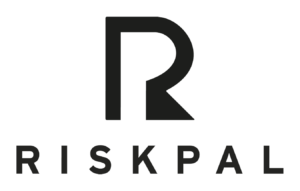
Behavioural Science in Safety?
The role of the safety specialist is evolving.
These professionals not only need to be effective analysts and policy creators, but inspirational leaders, marketing gurus, and sales-people. Essentially, every safety specialist needs to “sell” the idea of safety to their colleagues. While everyone wants to be safe, human beings don’t always enjoy being compliant.
People simply do not like to be told what to do and meekly follow a set of instructions even if it is for their own good. If something feels rigid, controlling or coercive – it is human nature to resist. Simply, look at many people’s reaction to mask mandates and Covid-19 restrictions.
Leveraging behavioural science, common among marketers and sales professionals, can help restructure the perception of compliance.
What is Behavioural Science?
Behavioural science is the study of how certain stimuli and factors can influence human behaviour in their personal decisions, thoughts and actions.
According to scientists, the average person makes around 35,000 decisions each day. The energy expenditure of this decision-making necessity would be enormous if the brain was not able to delegate most of them to unconscious or automated thinking. For evolutionary reasons, the brain resists anything that uses up energy if it can, to avoid exposing its owner to the risks associated to energy gathering (hunting).

Your body for example, automatically does a plethora of things that involve decisions, such as breathing, blinking, hormonal regulation, and digesting food – all without your conscious knowledge. Other significant choices are often done by habit. Your breakfast choices, the commute to work, driving and your weekly shop – these are all activities often delegated to unconscious decision making or habitual behaviour.
The potential to better understand what drives people’s behavioural patterns and how they can be moved to safer behaviour via the principle of nudging is often overlooked by the safety and compliance experts.
What is Nudge Theory?
The theory of “behavioural nudging” was championed by Case Sunstein and Richard Thaler, in their noble prizing winning book – Nudge. They articulate that a nudge is a way of altering a person’s behaviour without being disruptive. The idea is to design the choice of what to do in a way that appeals to the decision maker as easy and natural.
Consider the choice many employees have to join a pension plan. In the UK, a 2012 rule change meant workers were automatically enrolled into pension plans, but still had the option to leave. Enrolments skyrocketed because staying in the pension plan was simple.
The nudge “reframed” the choice without restricting it. Workers could still say “no”, but the decision to remain in the pension plan became the easiest option. This is a different concept to coercion or pressuring someone into a specific choice. Users still get the feeling of maintaining full control, but they’re “nudged” into making the right choice via simplicity.
Every day use of Nudging
Companies have used the same strategies over the years to improve strategic decision making, reduce bias in boardrooms, and improve productivity. Even the UK government famously established a nudge unit, with the help of Richard Thaler. This unit focused on using “nudges” to encourage citizens to vote, pay taxes on time, and address public health issues.
Nudging and behavioural science techniques are perhaps most common in the sales and marketing space. Everywhere we look, we see sales professionals attempting to nudge users towards specific decisions. For instance, ecommerce sites use notifications to tell you how many of a certain item have been sold, nudging you to get involved and avoid the fear of missing out.
Anchoring is another well-known psychological nudging technique used in pricing. It involves using a higher “before” price on a product page alongside a discount price, to make the perceived benefit seem even greater. Supermarkets also know that people tend buy unnecessary, and even more expensive items, if these items are placed at eye level at the end of the aisles or near the checkout.
Other examples might include:
- Placing trust symbols on websites to nudge users into feeling safe
- Using customer reviews to influence a customer’s perception of a product
- Leveraging colour psychology to influence the way we feel about an item
- Using automatic subscription renewals to keep customers buying more
Even in the retail world, stores are designed specifically to encourage users to purchase the items on the ends of shelves, and at eye-level, to reduce the strain of searching for the right item.
The use of behavioural science is around us all the time.
How Can Risk Managers Use Behavioural Science
If safety professionals can start by understanding the drivers of decision making, it will help them design compliance that works with human nature.
One of the simplest ways to make safety easier is to make it accessible. Safety professionals can take a leaf out the supermarket’s playbook by reducing the amount of information hosted on the intranet – which is often not used by staff or hard to navigate. Instead, incorporate this information into locations that staff access regularly or even into risk assessments.
Accident prevention is another area that nudging can really impact on. The opportunity is enormous, as demonstrated by Overbury Construction, when in a bid to reduce accidents on a site – they resorted to painting the worker’s canteen pink. This is believed to have reduced stress, anxiety and aggression. But the real proof is a whopping 82% reduction in accident over the 12 weeks after the colour change.
The Health and Safety Executive already recognises the role that Human Factors play in safety and encourages safety professionals to use behavioural science.
If you want to explore further, there is even a HSE certification on offer in behavioural science. Perhaps you should get started straight away.
Starting to think differently about your risk assessments and safety?
Contact us to find out more about how RiskPal is transforming the risk assessment process.
Follow Our Socials






